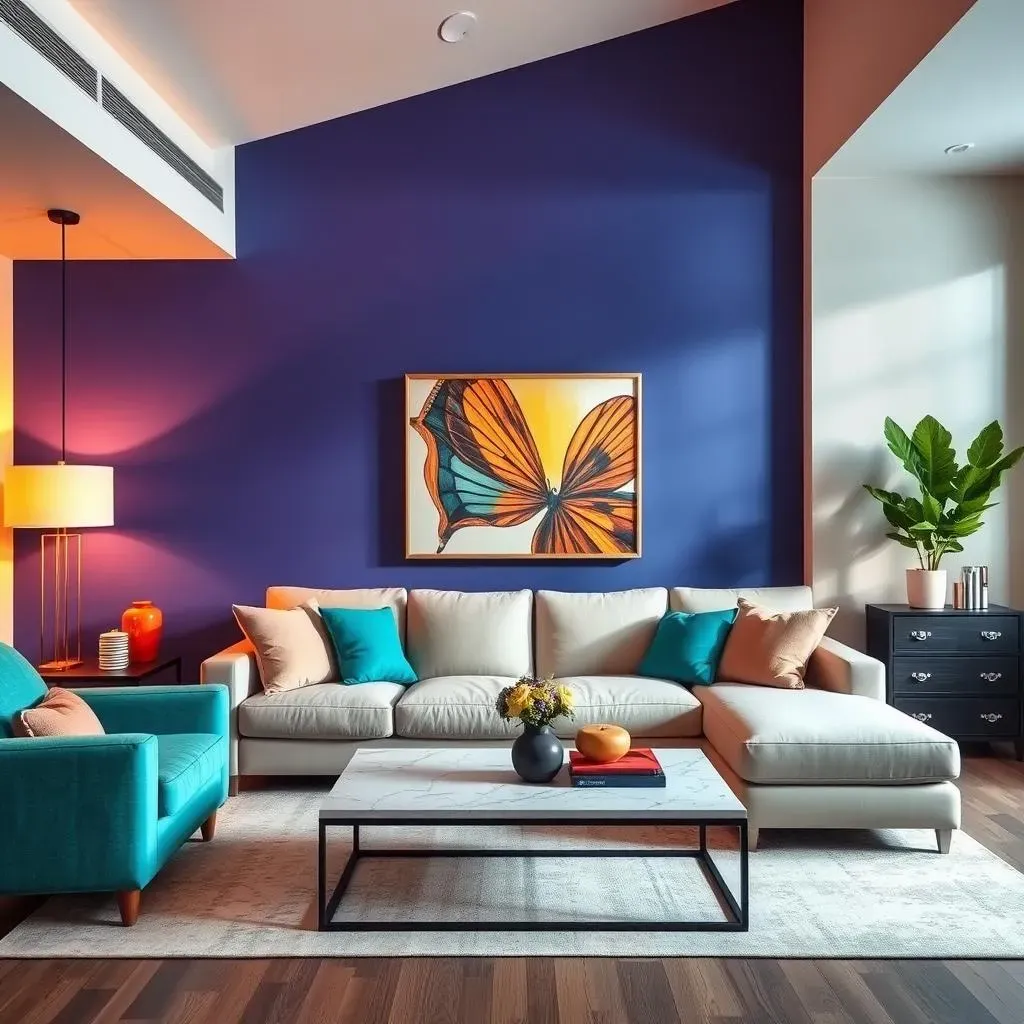Table of Contents
Ready to ditch those boring, monotone walls? I'm here to tell you, a living room accent wall is like a superhero cape for your space, adding instant personality and a touch of 'wow' without a total room overhaul. We’re not just talking about slapping any old color on the wall; we're talking about strategic color choices that can make your living room feel bigger, cozier, or even more sophisticated. Think of it as a visual high-five to anyone who walks in! This article will be your guide to navigating the world of living room accent wall color ideas. We’ll explore why an accent wall is a game-changer, dive into the best color options, and give you the lowdown on how to pick the perfect shade for your style. Plus, I’ll share some real-life examples and answer all those burning questions you might have. So, grab your paint swatches and let's get started – it's time to turn your living room into a space that truly reflects you!
Why Choose an Accent Wall for Your Living Room?
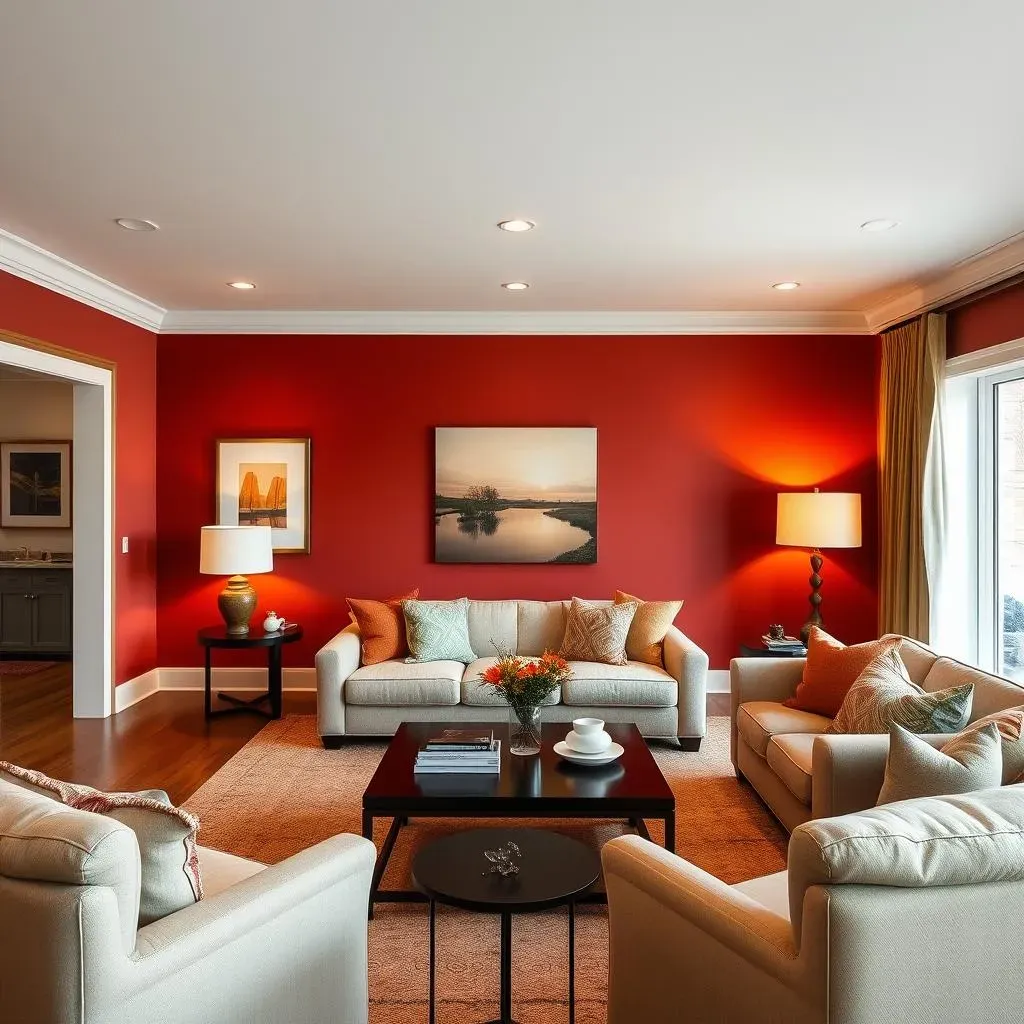
Why Choose an Accent Wall for Your Living Room?
Visual Interest and Focal Point
Okay, let's be real, sometimes a room can feel a bit…blah. Like it's missing that certain *something*. That's where an accent wall struts in, cape billowing in the wind. It's like giving your room a shot of espresso, instantly adding visual interest and creating a focal point that draws the eye. Instead of your gaze wandering aimlessly around the room, it now has a specific place to land. It's a way to say, "Hey, look at me! I'm interesting!" without shouting.
Think of it like this: if your living room is a stage, the accent wall is the star performer, grabbing attention and setting the mood. It’s a simple way to add depth and drama, turning a plain space into something that feels intentional and designed. It's not just paint; it's a statement.
Defining Space and Adding Dimension
Got an open floor plan? An accent wall can be your best friend. It's like a visual divider, helping to define different areas within a larger space. It says, "This is the living room zone," without needing actual walls. It adds dimension and depth, making the room feel less like a vast, undefined expanse and more like a cozy, intentional gathering spot. It's about creating zones that are both functional and visually appealing.
It's also a clever trick to make a room feel bigger or smaller depending on the color and placement. A darker accent wall can make a large space feel cozier, while a lighter one can visually expand a smaller room. It's all about playing with perception and making the most of what you've got.
Benefit | Description |
|---|---|
Visual Interest | Creates a focal point and adds personality. |
Space Definition | Divides open floor plans and adds dimension. |
Mood Setting | Enhances the atmosphere through color choice. |
Mood Enhancement Through Color
Let's face it, color is powerful. It can make you feel energized, relaxed, or even a bit dramatic. An accent wall lets you harness that power to create the exact mood you want in your living room. Want a calming oasis? Think blues and greens. Craving a vibrant, energetic space? Go bold with oranges or yellows. It's like choosing a filter for your room, changing the entire vibe with a simple coat of paint. It’s like having a mood ring for your walls!
Plus, it's a great way to show off your personality. Do you love the deep, moody vibes? Go for a dark charcoal. Are you a fan of bright and cheerful? Try a sunny yellow. It's your space, so why not make it a reflection of you? It's more than just a wall, it's an expression.
Top Living Room Accent Wall Color Ideas
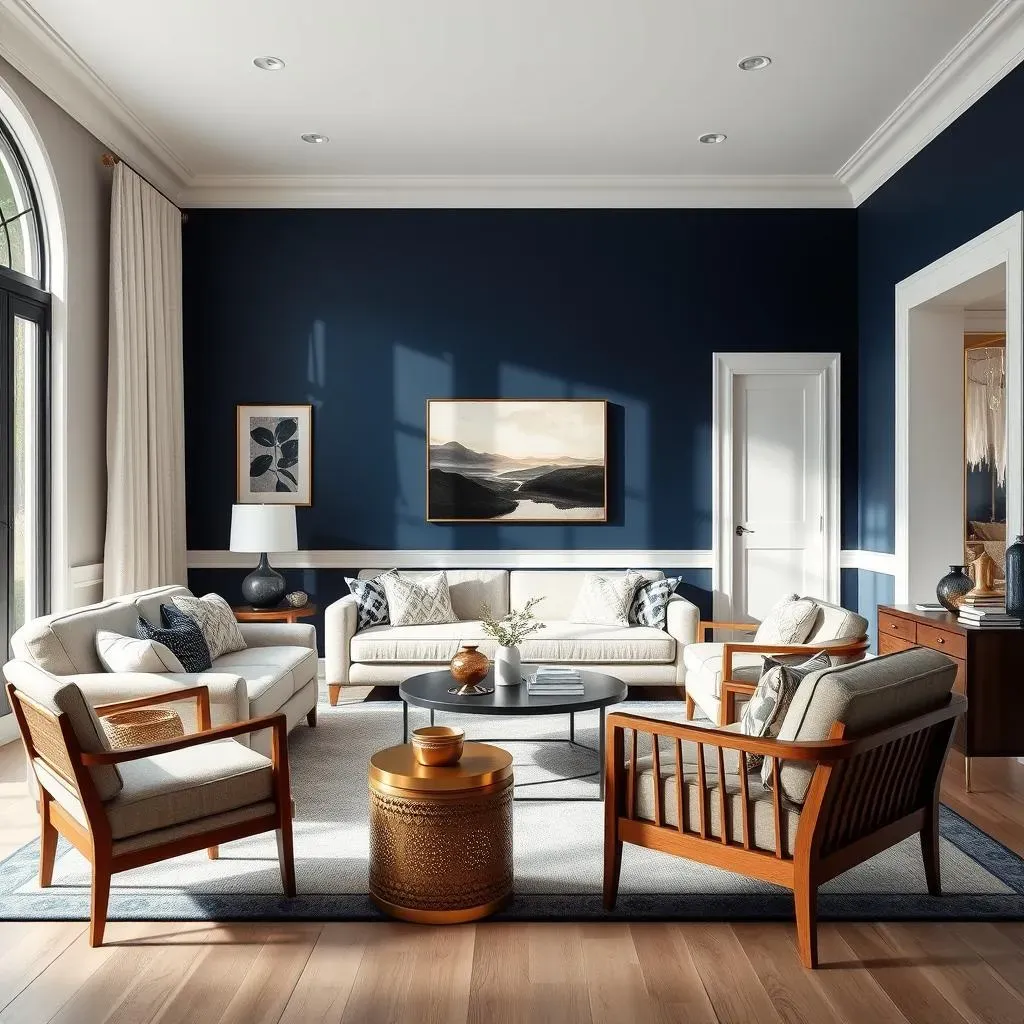
Top Living Room Accent Wall Color Ideas
Alright, let's talk colors! This is where the magic really happens. When it comes to living room accent wall color ideas, you've got a whole rainbow to choose from, but some shades really stand out for their ability to transform a space. We're not just picking colors randomly; we're thinking about what each color brings to the party. For example, deep, moody hues like navy blue or charcoal gray can add a touch of sophistication and drama, while lighter, brighter colors like sage green or soft coral can create a more relaxed and inviting atmosphere. It's like choosing the right outfit for your room – it can make all the difference!
But before you grab a brush, let's break down some of the most popular and effective accent wall colors. We'll look at why they work so well and how you can use them to create the exact vibe you're going for. Whether you're into bold statements or subtle enhancements, there's a color out there that's perfect for your living room. It's all about finding the right balance and making it your own.
Color | Vibe | Best Paired With |
|---|---|---|
Navy Blue | Sophisticated, Calm | Light neutrals, gold accents |
Sage Green | Relaxing, Natural | Wooden furniture, earthy tones |
Charcoal Gray | Dramatic, Modern | Bright artwork, metallic finishes |
Soft Coral | Inviting, Cheerful | White trim, pastel accessories |
How to Select the Right Color for Your Living Room Accent Wall
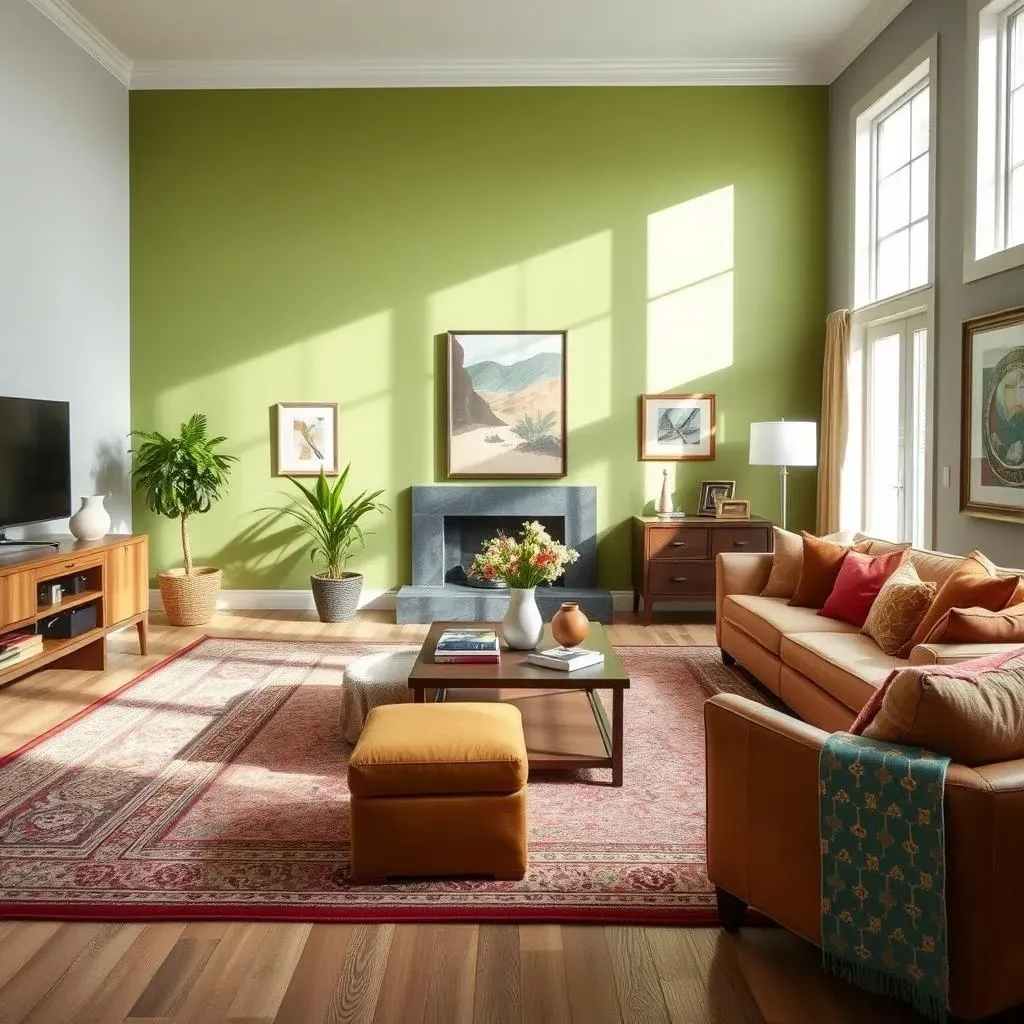
How to Select the Right Color for Your Living Room Accent Wall
Okay, so you're itching to add an accent wall, but you're staring at a paint deck feeling totally lost? I get it! Picking the right color isn't just about what looks pretty; it's about creating a cohesive space that feels balanced. First things first, take a good look at your existing decor. What colors are already at play in your furniture, rugs, and artwork? Your accent wall shouldn't be a random guest at the party; it should be a well-integrated part of the crew. Think of it like choosing a band member – they need to complement the other instruments, not clash.
Now, let's talk about the mood you're trying to create. Do you want something calm and serene, or bold and energetic? The color you choose will play a huge role in setting the tone. And don't forget about the lighting! Natural light can make a color look completely different than artificial light, so test out your swatches in different lighting conditions before making a commitment. It's like trying on an outfit in different mirrors; you want to see how it looks in all situations. Also think about the size of the room, a dark color in a small room might feel claustrophobic, while a lighter color can make it feel more spacious. It's all about creating a harmonious space that reflects your style and personality.
Factor | Consideration |
|---|---|
Existing Decor | Choose a color that complements your furniture, rugs, and artwork. |
Desired Mood | Select a color that aligns with the atmosphere you want to create. |
Lighting | Test color swatches in both natural and artificial light. |
Room Size | Use lighter colors to make a small room feel bigger, darker colors to make a large room feel cozier. |
Painting Techniques and Tips for Your Living Room Accent Wall

Painting Techniques and Tips for Your Living Room Accent Wall
Prep Work is Key
Alright, before you even think about cracking open that paint can, let's talk prep. This is where many people go wrong, and trust me, a little prep goes a long way. First, clear the area. Move furniture out of the way, and cover anything you can't move with drop cloths. It's like setting up your battlefield – you want a clean and protected zone. Next, take a good look at your wall. Are there any holes or cracks? If so, fill them with spackle and let it dry. Then sand it smooth. You want a perfectly smooth surface for your paint to adhere to. Finally, wipe down the wall with a damp cloth to remove any dust or debris. Remember, a smooth, clean wall is the secret to a professional-looking finish. It's like laying the perfect foundation for a building; you can't skip the groundwork.
And don't forget painter's tape! Use it to carefully tape off any trim, ceilings, or adjacent walls. This will help you create clean, sharp lines and prevent any accidental paint splatters. It's like having a steady hand with a paintbrush – it gives you precision and control. It might seem tedious, but this step will save you a lot of headaches later. Trust me on this one.
Painting Like a Pro
Now for the fun part – painting! Before you start, make sure you've got the right tools. A good quality brush, a roller, and a paint tray are essential. And don't skimp on the paint! Investing in a premium paint is worth it; it will give you better coverage and a more vibrant color. Start by "cutting in" – that is, painting a neat line along the edges of the wall with a brush. This creates a nice, clean border before you move on to the rest of the wall. Then use the roller to fill in the larger areas, using smooth, even strokes. Avoid overloading the roller with paint, which can lead to drips and uneven coverage. It's like applying icing on a cake – you want a smooth, consistent layer.
Typically, two coats of paint are needed for a good, solid color. Allow the first coat to dry completely before applying the second. This prevents the color from looking streaky or uneven. And remember, patience is key! Don't rush the process; take your time to ensure a flawless finish. It's like making a masterpiece; it takes time and care.
Step | Action |
|---|---|
Prep | Clear the area, fill holes, sand, and clean the wall. |
Tape | Carefully tape off trim and edges. |
Cut In | Paint edges with a brush. |
Roll | Fill in larger areas with a roller, using smooth strokes. |
Second Coat | Allow the first coat to dry completely, then apply a second. |
Finishing Touches and Clean Up
Once the second coat is dry, carefully remove the painter’s tape. Do this slowly and at an angle to avoid pulling up any paint. If you do happen to get any paint on the trim or ceiling, touch it up with a small brush. It’s like putting the finishing touches on a puzzle – you want everything to fit perfectly. Then, clean your brushes and rollers thoroughly with soap and water. Proper clean-up will help your tools last longer, and it will save you time next time you decide to paint. It’s like taking care of your tools – they’ll take care of you.
Finally, step back and admire your work! You’ve just transformed your living room with a stunning accent wall. Now, it’s time to move your furniture back in place and enjoy your newly refreshed space. It’s like seeing your vision come to life – it’s a truly satisfying feeling.
RealLife Examples of Stunning Living Room Accent Walls
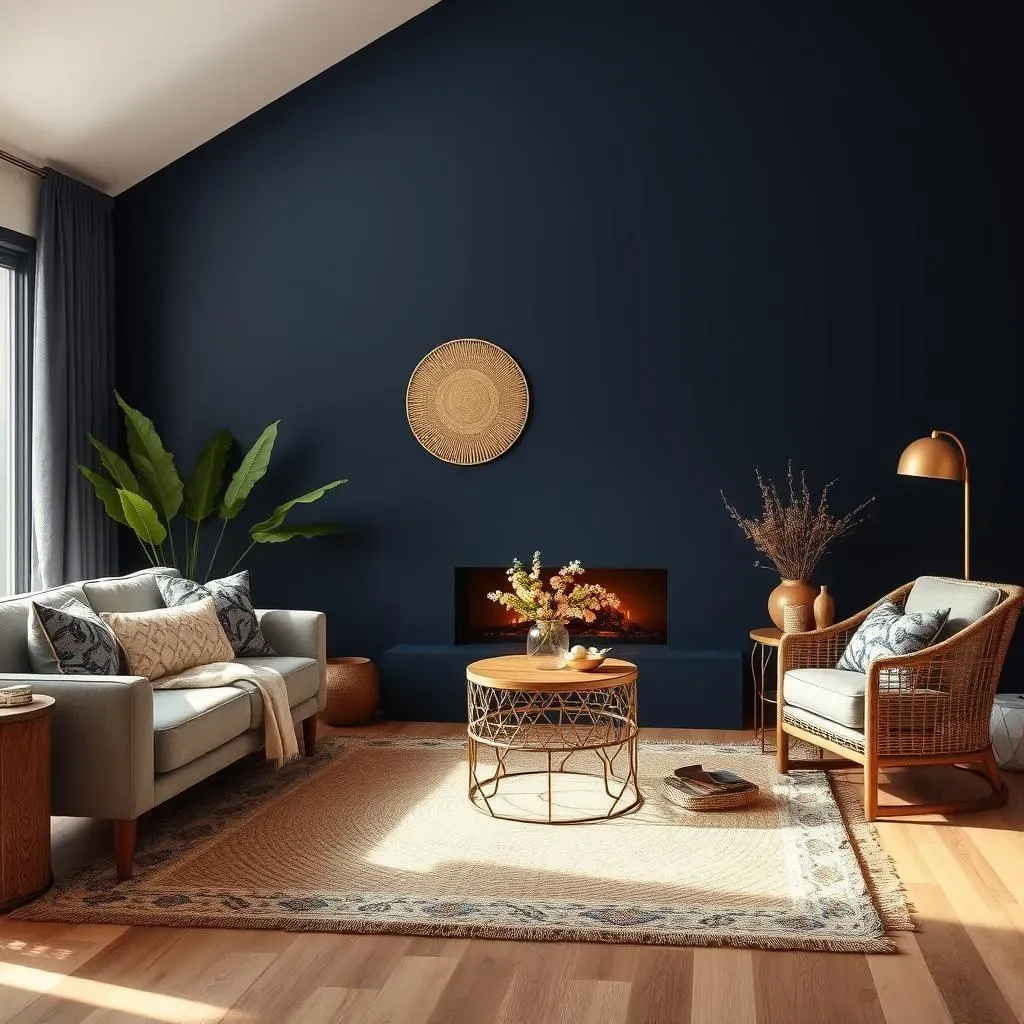
RealLife Examples of Stunning Living Room Accent Walls
Bold Navy with Gold Accents
Let's kick things off with a real showstopper: a living room that used a deep navy blue for its accent wall. Now, this isn't just any navy; it's a rich, almost velvety shade that screams sophistication. What makes it work? The gold accents! Think gold-framed artwork, a sleek gold coffee table, and maybe even a few gold throw pillows. The contrast between the deep blue and the shimmering gold is simply divine. It’s like a perfectly tailored suit with a bold tie – classic, yet undeniably stylish. This example proves that bold choices can really pay off when done right.
The room itself had plenty of natural light, which prevented the navy from feeling too heavy or overwhelming. The furniture was kept light and neutral, allowing the accent wall to truly shine. It's a great example of how to use a dark color to create a focal point without making the room feel small or cramped. It’s a lesson in balance, showing that contrast can be a powerful tool.
Serene Sage Green with Natural Textures
Now, let’s switch gears to something a little more calming. Imagine a living room with a sage green accent wall. This isn't your grandma's sage; it’s a soft, muted green that feels both fresh and grounding. What makes this example so special is the way it’s paired with natural textures. Think woven rugs, wooden furniture, and maybe even a few potted plants. It's like bringing the outdoors inside, creating a space that feels relaxed and inviting. This is perfect for those who want a living room that feels like a breath of fresh air.
The rest of the room was kept simple and uncluttered, allowing the accent wall to take center stage. The natural light played beautifully with the green, creating a warm and inviting atmosphere. It's a great example of how to use color to create a mood, and how to use textures to enhance that mood. It’s a lesson in subtle sophistication, proving that less can definitely be more.
Example | Color | Accents | Vibe |
|---|---|---|---|
Bold Navy | Deep Navy Blue | Gold | Sophisticated, Dramatic |
Serene Sage | Soft Sage Green | Natural Textures | Relaxing, Inviting |
Frequently Asked Questions About Living Room Accent Walls
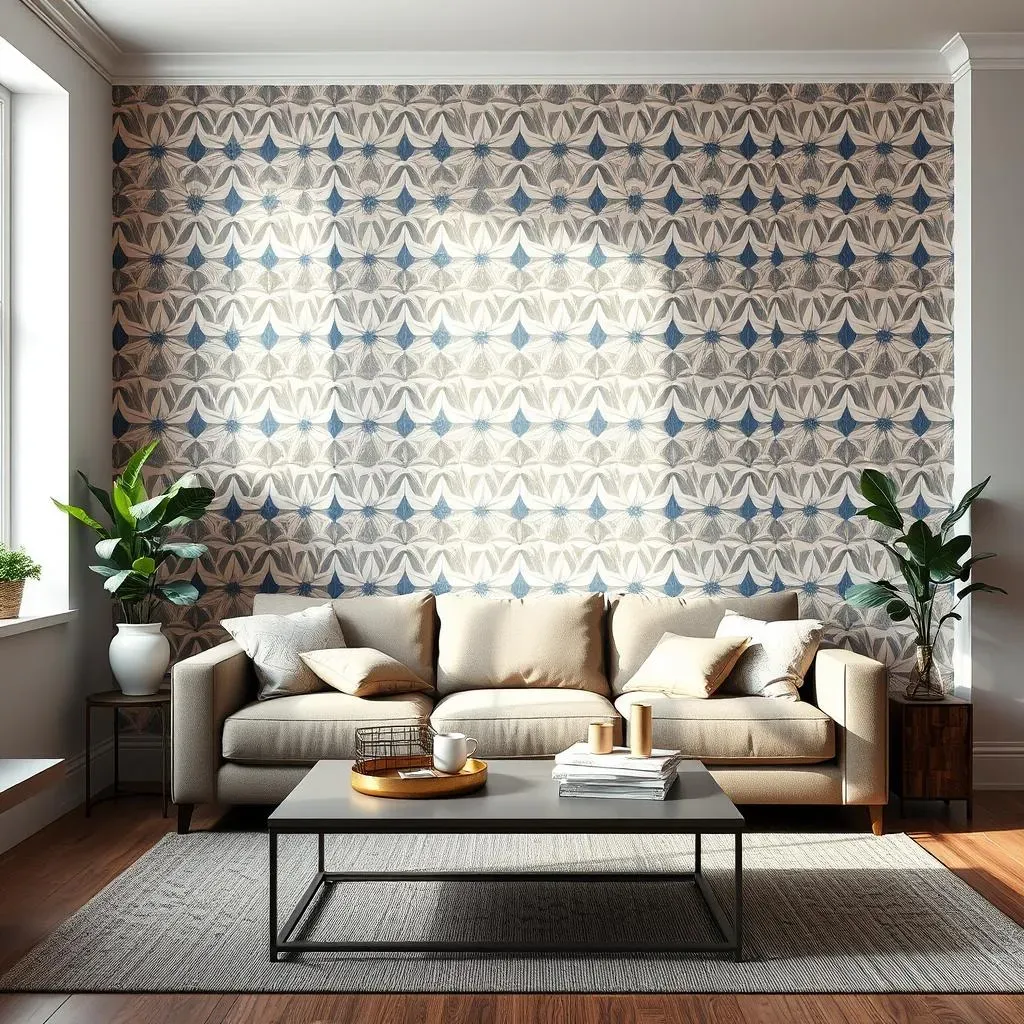
Frequently Asked Questions About Living Room Accent Walls
How Do I Choose the Right Wall for My Accent?
Okay, this is a great question! It's not about picking the biggest wall or the one that's easiest to paint. It's about choosing a wall that has a purpose. Think about the focal points in your living room. Is there a fireplace? A built-in bookshelf? A large window with a great view? These are all great candidates for an accent wall. The idea is to pick a wall that will naturally draw the eye and create a sense of balance in the room. It's like choosing the perfect spot for a picture; you want it to be in a place that will enhance the overall composition of the room.
Also consider the architecture of your space. Is there a wall with interesting angles or unique features? These can make for a really cool and dynamic accent wall. The goal here is to highlight the best parts of your space and to use the accent wall to create a sense of visual interest. It's not just about adding color; it's about adding dimension and depth. And remember, there's no hard and fast rule, so trust your gut! It's all about creating a space that feels right for you.
How Much Paint Do I Need for an Accent Wall?
This is a very practical question, and one that everyone asks! The amount of paint you need will depend on the size of your wall, but generally, a gallon of premium paint is usually enough for two coats on a standard-sized accent wall. It's always better to have a little extra than to run out halfway through, so don't be afraid to buy a bit more than you think you'll need. It's like stocking up on snacks before a movie – you never know when you'll need a little extra.
Now, don't forget that the type of paint also matters. A high-quality paint will often give you better coverage, meaning you might get away with just one coat. But, as a general rule, I always recommend two coats for the best results. It's like putting on sunscreen – you need to make sure you've got enough coverage to do the job properly! And remember, it's better to be safe than sorry, so don't hesitate to buy a little extra. It might just save you a trip back to the store mid-project!
Question | Answer |
|---|---|
Which wall is best? | Choose a wall with a focal point or architectural interest. |
How much paint? | A gallon is usually enough for two coats on a standard wall. |
Can I Use Wallpaper Instead of Paint for an Accent Wall?
Absolutely! Wallpaper is a fantastic option for an accent wall, and it can add a whole new level of texture and pattern to your living room. Think bold geometric prints, luxurious damasks, or even a textured grasscloth. Wallpaper can be a real game-changer, transforming a plain wall into a work of art. It's like adding a statement piece to your wardrobe – it can really elevate your style.
However, it's worth noting that wallpaper can be a bit trickier to install than paint, so you might want to consider hiring a professional if you're not comfortable with the process. But if you're up for the challenge, the results can be truly stunning. It's all about finding the right balance between style and practicality, and choosing what works best for you and your space. It’s like choosing a new adventure; it can be a bit daunting, but the rewards are well worth the effort.
What If I Don't Like the Color I Choose?
Okay, let's be real, sometimes we pick a color and it just doesn't work out. And that's totally okay! The beauty of paint is that it's not permanent. If you're not happy with your accent wall, you can always paint over it. It's just part of the decorating process, and it's all about learning and experimenting. It's like trying a new recipe – sometimes you need to tweak it to get it just right.
My advice? Don't be afraid to try something new, and don't get discouraged if it doesn't work out the first time. Just learn from the experience, and try again. It’s also wise to test out a small area before committing to the whole wall. It's like trying on clothes before buying them; you want to make sure it looks good on you! And remember, it's your space, so have fun with it! It's like a personal canvas; you can always paint over it and create something new.
Question | Answer |
|---|---|
Wallpaper instead of paint? | Absolutely, for added texture and pattern. |
What if I dislike the color? | No problem, paint over it and try again. |
